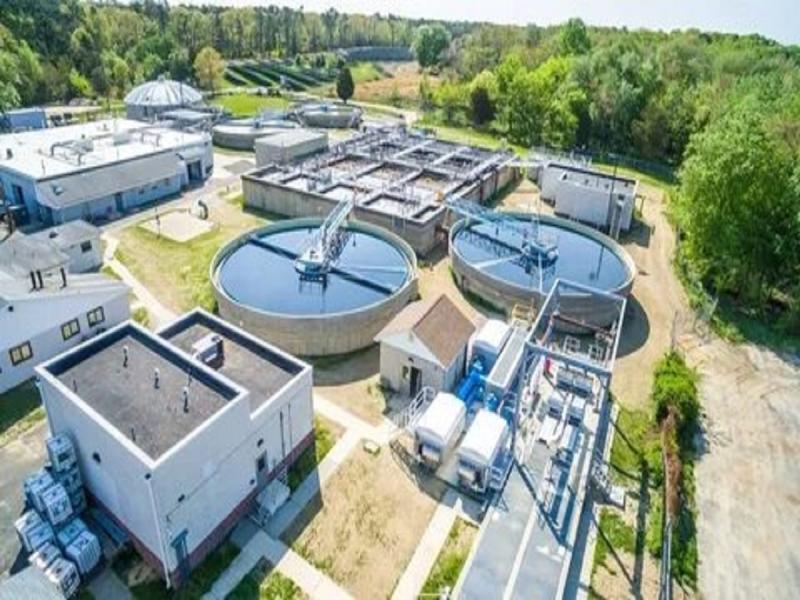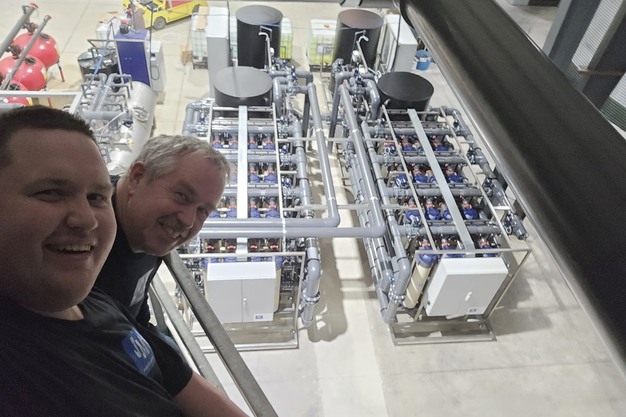Outrage in Iowa: Residents demand action to clean up dangerously polluted water – Investigate Midwest

Report on Iowa’s Water Contamination Crisis and its Conflict with Sustainable Development Goals
A public forum held in Des Moines, Iowa, highlighted a severe water pollution crisis, revealing significant challenges to achieving key United Nations Sustainable Development Goals (SDGs). Attended by approximately 800 citizens in person and 400 online, the event centered on new scientific research linking the state’s agricultural industry to dangerous levels of water contamination, thereby threatening public health and environmental stability.
1. Public Health and Water Quality: A Failure to Meet SDG 3 and SDG 6
The crisis in Iowa represents a direct challenge to SDG 3 (Good Health and Well-being) and SDG 6 (Clean Water and Sanitation). A recent report commissioned by Polk County officials provided evidence that agricultural runoff is jeopardizing the health of residents and ecosystems.
- Nitrate Contamination: Nitrate levels in Iowa’s water sources, including the Raccoon River, frequently exceed the federally mandated safe standard of 10 milligrams per liter. This has forced the utility serving 600,000 people to issue water use restrictions.
- Public Health Impacts: High nitrate levels are scientifically linked to severe health risks, particularly for infants, and an increased risk of multiple cancers (blood, brain, breast, bladder, ovaries). This is especially concerning as Iowa has the second-highest cancer rate in the United States, a rate which continues to increase.
- Inadequate Monitoring: Public concern was exacerbated by the state’s decision to reduce funding for water quality monitoring, undermining efforts to protect and manage water resources as mandated by SDG 6.
2. Unsustainable Production and Environmental Impact: Contradicting SDG 12 and SDG 14
The source of the pollution is tied to intensive agricultural practices that conflict with SDG 12 (Responsible Consumption and Production) and have led to the degradation of aquatic ecosystems, a core concern of SDG 14 (Life Below Water).
- Agricultural Pollutants: The primary contaminants identified are byproducts of Iowa’s agricultural economy, which includes nearly 87,000 farms. These pollutants include:
- Fertilizers and pesticides from crop production.
- Manure from large Concentrated Animal Feeding Operations (CAFOs).
- Wastewater from agricultural businesses such as slaughterhouses.
- Corporate Accountability: Recent cases underscore the failure to enforce responsible production.
- Agri Star Meat and Poultry: Fined $50,000 for repeated wastewater violations that led to “acutely toxic concentrations” of ammonia in waterways.
- NEW Co-op: Fined $50,000 for an ammonia nitrogen release that caused a significant fish kill along 48 miles of the Nishnabotna River, a direct detriment to life below water (SDG 14).
- Farmer Concerns: Some farmers are adopting conservation practices voluntarily but express that systemic change is impossible without enforceable regulations to ensure industry-wide sustainable practices.
3. Governance and Institutional Response: The Need for Stronger Institutions (SDG 16)
The public’s response indicates a perceived failure of governance and a demand for stronger institutions and justice, as outlined in SDG 16 (Peace, Justice and Strong Institutions).
- Call for Regulation: A growing number of citizens and local officials are demanding new, enforceable regulations on agricultural pollution, arguing that the current voluntary approach is insufficient.
- Perceived Government Inaction: State officials are criticized for being reluctant to regulate the powerful agricultural industry and for deflecting from its role in the public health crisis.
- Citizen Advocacy: In response, community groups like the Nishnabotna Water Defenders are forming to monitor water quality and advocate for political action, demonstrating a grassroots effort to build accountability and strengthen institutional response from the ground up. The forum concluded with calls for attendees to engage in water monitoring and public advocacy.
Analysis of Sustainable Development Goals in the Article
1. Which SDGs are addressed or connected to the issues highlighted in the article?
The article on water pollution in Iowa addresses several interconnected Sustainable Development Goals (SDGs). The primary issues of contaminated drinking water, public health crises, environmental degradation from agriculture, and community response directly link to the following SDGs:
- SDG 3: Good Health and Well-being: The article extensively discusses the public health implications of water pollution, particularly the link between contaminants and Iowa’s high cancer rates.
- SDG 6: Clean Water and Sanitation: This is the central theme of the article, focusing on the contamination of water supplies used for drinking and recreation, the need for better water quality management, and community involvement.
- SDG 12: Responsible Consumption and Production: The source of the pollution is identified as the state’s “powerful agricultural industry,” highlighting unsustainable production patterns related to the use of chemicals and management of waste from farming and livestock operations.
- SDG 14: Life Below Water: The article mentions the impact of agricultural runoff on aquatic ecosystems, specifically citing a “significant fish kill” caused by an ammonia nitrogen release.
- SDG 15: Life on Land: The pollution of inland waterways like the Raccoon and Nishnabotna rivers represents a failure to protect and restore freshwater ecosystems, which falls under this goal.
- SDG 16: Peace, Justice and Strong Institutions: The article highlights a crisis of governance and accountability, with residents demanding “new regulations on farm pollution,” protesting funding cuts for monitoring, and feeling that “public officials don’t have a political will” to address the problem.
2. What specific targets under those SDGs can be identified based on the article’s content?
Based on the issues discussed, several specific SDG targets can be identified:
- Target 3.9: By 2030, substantially reduce the number of deaths and illnesses from hazardous chemicals and air, water and soil pollution and contamination.
- Explanation: The article directly connects “dangerously polluted water supplies” to severe health problems. It states that pollutants like nitrates are linked to “cancers of the blood, brain, breast, bladder and ovaries” and notes that Iowa has the “second-highest rate of cancer in the nation.”
- Target 6.1: By 2030, achieve universal and equitable access to safe and affordable drinking water for all.
- Explanation: The article demonstrates a lack of safe drinking water, mentioning that the utility serving 600,000 people had to restrict water use because it “could not safely clear the high levels” of nitrates. This shows that access to safe water is not guaranteed.
- Target 6.3: By 2030, improve water quality by reducing pollution, eliminating dumping and minimizing release of hazardous chemicals and materials.
- Explanation: The core issue is the contamination of waterways by “pesticides, fertilizers, manure and other contaminants from Iowa farms and livestock operations.” The article also cites a slaughterhouse that “exceeded wastewater limits roughly 60 times,” leading to toxic ammonia concentrations.
- Target 6.6: By 2020, protect and restore water-related ecosystems.
- Explanation: The article describes the negative impact on ecosystems, highlighted by the case of an ammonia nitrogen release that “caused a ‘significant’ fish kill along 48 miles of the Nishnabotna River.”
- Target 6.b: Support and strengthen the participation of local communities in improving water and sanitation management.
- Explanation: The article is centered on community action. It describes how “several hundred Iowa residents gathered in the state capital” for a forum, the formation of the “Nishnabotna Water Defenders” to monitor water quality, and organizers asking attendees to sign up for “public advocacy efforts.”
- Target 12.4: By 2020, achieve the environmentally sound management of chemicals and all wastes throughout their life cycle… and significantly reduce their release to… water and soil.
- Explanation: The pollution stems from agricultural inputs like fertilizers and waste from “large concentrated animal feeding operations (CAFOs)” and slaughterhouses. The case of Agri Star Meat and Poultry failing to manage its wastewater is a direct example of a failure to achieve this target.
- Target 14.1: By 2025, prevent and significantly reduce marine pollution of all kinds, in particular from land-based activities, including… nutrient pollution.
- Explanation: The article details nutrient pollution from nitrates and ammonia originating from land-based agriculture. The Nishnabotna River is a tributary of the Missouri River, meaning this pollution contributes to downstream water bodies and, eventually, marine environments.
3. Are there any indicators mentioned or implied in the article that can be used to measure progress towards the identified targets?
Yes, the article mentions several quantitative and qualitative indicators that can be used to measure progress:
- Indicator for Target 3.9 (Health Impacts): The article provides a baseline indicator by stating, “Iowa has the second-highest rate of cancer in the nation, and has become one of only two US states where cancer overall is increasing.” Tracking these cancer rates over time would measure progress.
- Indicator for Target 6.3 (Water Quality): A specific, measurable indicator of water pollution is provided: “Nitrates, generated by fertilizer and manure, are a particular concern, routinely found in Iowa waters at levels above the 10 milligrams per liter federal regulators set as a safe standard.” The chart from Central Iowa Water Works showing the number of days nitrate levels were above this standard is a direct monitoring tool.
- Indicator for Target 6.6 (Ecosystem Health): The “significant fish kill along 48 miles of the Nishnabotna River” serves as a stark, albeit qualitative, indicator of severe ecosystem damage. The frequency and scale of such events can be monitored.
- Indicator for Target 12.4 (Waste Management): The article notes that Agri Star Meat and Poultry “was found to have exceeded wastewater limits roughly 60 times.” The number of such violations by industrial operations is a clear indicator of compliance with waste management regulations.
- Indicator for Target 6.b (Community Participation): The level of public engagement is indicated by the number of people attending the forum (“roughly 800 attended in person and another 400 participated online”) and the formation of citizen-led groups like the “Nishnabotna Water Defenders.”
4. Table of SDGs, Targets, and Indicators
| SDGs | Targets | Indicators Identified in the Article |
|---|---|---|
| SDG 3: Good Health and Well-being | 3.9: Substantially reduce deaths and illnesses from hazardous chemicals and water pollution. | Iowa’s cancer rate (second-highest in the nation) and the rising incidence of specific cancers linked to water contaminants. |
| SDG 6: Clean Water and Sanitation | 6.1: Achieve universal access to safe drinking water. | Water use restrictions for 600,000 people due to unsafe nitrate levels. |
| 6.3: Improve water quality by reducing pollution. | Nitrate levels exceeding the 10 mg/L federal safe standard; “acutely toxic concentrations” of ammonia. | |
| 6.b: Strengthen participation of local communities in water management. | Attendance at public forums (800 in person, 400 online); formation of citizen groups like the “Nishnabotna Water Defenders.” | |
| SDG 12: Responsible Consumption and Production | 12.4: Achieve environmentally sound management of chemicals and wastes. | Number of wastewater limit violations by a slaughterhouse (60 times); widespread pollution from agricultural fertilizers and manure. |
| SDG 14: Life Below Water | 14.1: Reduce marine pollution from land-based activities, including nutrient pollution. | A “significant fish kill along 48 miles” of a river due to an ammonia nitrogen (nutrient) spill. |
| SDG 16: Peace, Justice and Strong Institutions | 16.7: Ensure responsive, inclusive, and participatory decision-making. | Public demands for new regulations and accountability; protests against funding cuts for water monitoring. |
Source: investigatemidwest.org

What is Your Reaction?
 Like
0
Like
0
 Dislike
0
Dislike
0
 Love
0
Love
0
 Funny
0
Funny
0
 Angry
0
Angry
0
 Sad
0
Sad
0
 Wow
0
Wow
0


-1920w.png?#)







































































